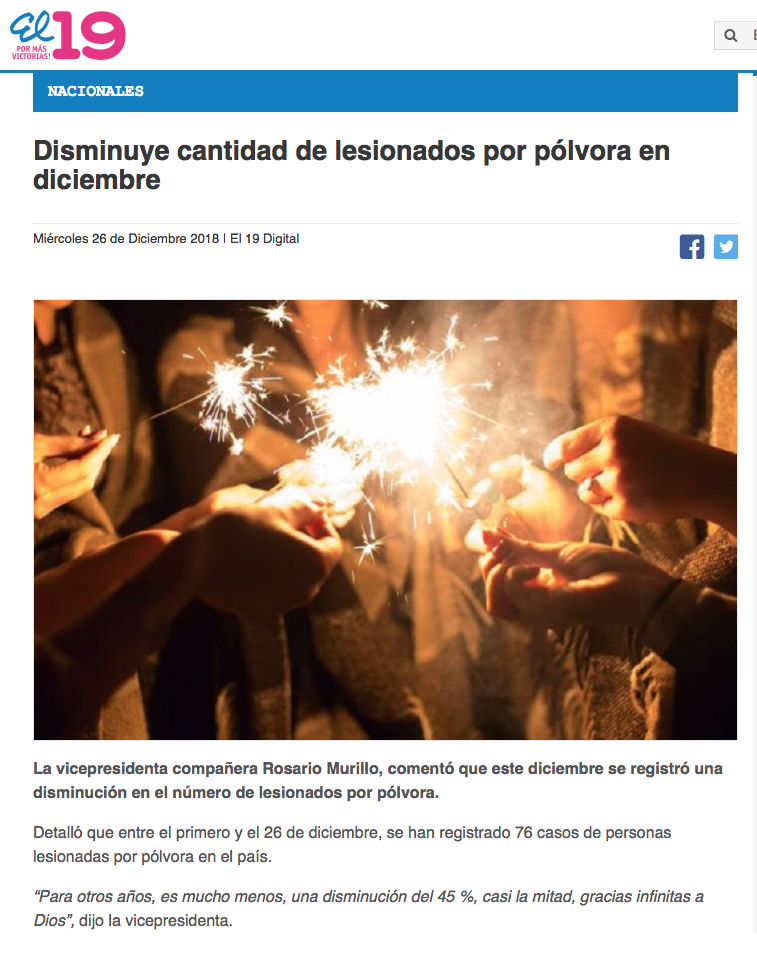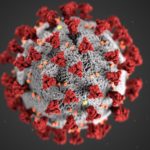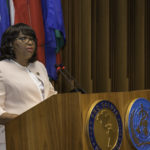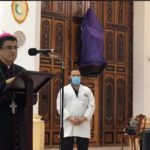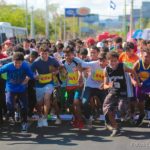On December 21, after being expelled from Nicaragua, the Interdisciplinary Group of Independent Experts (GIEI, by its Spanish acronym) presented its long-awaited report on the Nicaraguan crisis. GIEI concluded that the “The Government of Daniel Ortega and Rosario Murillo committed “crimes against humanity” during the repression of the civic protests”. The group also said that the regime had constructed an “official discourse” that plays a significant role in shaping social reality:
GIEI reiterated previously expressed concerns about stigmatization of dissenters and protesters. In July, the Executive Secretary of the Interamerican Human Rights Commission, Paulo Abrao, warned public officials against engaging stigmatizing discourse because it can put the stigmatized groups at greater risk:
In “The OrMu Propaganda Machine – Part II” I examined one case in which stigmatizing discourse contributed to an attack on an opposition figure, Felix Maradiaga. However, there is another aspect that the GIEI report mentions. The experts indicated that the regime’s discourse “[plays] a key role in the construction of social imaginaries, positive or negative”. Stigmatization is the negative, whereas the discourse of normalcy is the positive. This post focuses on the discourse of normalcy.
The OrMu Propaganda Machine (OPM), through its media outlets and bot networks, is tasked with producing and distributing messages that support the illusion of normalcy, OrMu’s version of Nicaraguan reality. The country is at peace, after having defeated an attempted coup. A new park, highway overpass, or road seems to be inaugurated every week, and every day, Rosario Murillo reminds us that the coup has been defeated, the crisis averted, and that Nicaraguan families are enjoying unparalleled tranquility, safeguarded by the Orteguista Police:
The families [are] carrying out their recreational, commercial, cultural, religious, and athletic activities in a peaceful environment, that environment of harmonious coexistence, that guaranty of safety that we have in our Nicaragua (Rosario Murillo’s Message on December 20, paragraphs 20-21, my translation).
OPM media amplify the regime’s discourse of normalcy by distributing every utterance out of El Carmen, Ortega’s compound in Managua, as though it were gospel. If Murillo utters partial truths or outright falsehoods, her words will be repeated without question or alteration.
Take, for example, this article on El 19 Digital, which was republished by Canal 4 without change (see below). On December 26, Murillo announced that the number of injuries due to unsafe handling of fireworks registered in the month of December had gone down by 45%, when compared to the same time period for 2017. “For that, we give God infinite thanks”, she said.
Disminuye cantidad de lesionados por pólvora en diciembre#Canal4Noticias
Ver más 👉https://t.co/rNeilKwWaI pic.twitter.com/jnuW2eXNXs
— Canal 4 Nicaragua (@Canal4Ni) December 26, 2018
Injuries due to unsafe handling of fireworks are common during the holidays. That is why the Ortega regime decided to do something about it in 2017. The government tasked the Promotoria Solidaria, a sandinista social welfare program, with a campaign promoting safe use of fireworks. At the time, Alex Galeano, the National Coordinator of the Promotoria, said that greater involvement from fathers was the desired outcome, as fireworks are perceived as a male activity, and unsupervised children playing with fireworks tend to get injured very often. He added that:
Though there is no data measuring the impact of the campaign, we do know that at least 223 people were injured by fireworks during the 2017 holiday period. Rosario Murillo announced the final numbers in January of 2018. The injuries doubled in comparison to the prior period in 2016. Therefore, it’s safe to conclude that the Promotoria’s campaign had little to no impact on the behaviors it sought to prevent. Such an outcome is not surprising, as behavioral change does not happen in an instant. It is a long-term process that requires careful planning, expertise, and commitment.
This holiday season, Murillo was able announce a reduction in the number of injuries, though not because of any behavioral change campaign. Unmentioned in El 19’s reporting is the fact that the Orteguista Police (OP) instituted restrictions on the “storage, distribution, transportation, sale, and handling” of three specific types of fireworks, artisanal mortars, ‘carga cerrada de vara’ [a type of firecracker strand of greater length], and #10 bombs, also known as “mother-in-law killers”. Other kinds of fireworks, such as “arbolitos” (fountains) were not restricted. In 2017, both the Managua Fire Department and the Red Cross identified arbolitos among the most dangerous firework products available for two reasons: (1) unsupervised minors light arbolitos and get injured, and (2) generally speaking, people light arbolitos and then stand too close. It would stand to reason the sale of arbolitos would also be restricted on the grounds of public safety. However, it wasn’t. In fact, vendors interviewed by La Prensa said that they hoped that to “stay afloat through the sale of rockets, [regular] carga cerrada, and arbolitos.”
With its explicit inclusions and exclusions, the OP’s edict was widely interpreted as a repressive act because “the explosives prohibited by the Police were used by Nicaraguans during one of the most serious stages of the protests against Ortega, between May and July, to confront the “combined forces” of the government, which comprised police, riot police, “parapolice” and alleged “paramilitaries” armed with war rifles and rocket launchers.” Videos compiled by the GIEI to document “the acts of violence that occurred in Nicaragua as of April 18, 2018” show protesters confronting police and/or combined forces, using artisanal mortars and “cuetes” (rockets), as well as rocks an slingshots.
Murillo’s self-congratulatory announcement is a clear example of the discourse of normalcy. In this case, purposeful omission of important details transforms the consequence of a police edict and/or the ongoing economic downturn into a triumph. This is possible due to the OPM’s media disciplined support for the regime. Journalists working within the official structure are stenographers within a top-down, propaganda operation, as described by Carlos Mykel Espinosa, formerly of El19 Digital:
In the official media […] everything is hierarchical. You don’t go out to get the information. You don’t go around making phone calls. Instead, everything is coordinated. There is someone above your that gives you the information. In my case, all I had to do was send out the teams […]. I have said several times that before [the crisis] we omitted [details], but in this case [since the crisis started] we went from omitting to lying, and we lied openly.
The discourse of normalcy also relies significantly on photographic images to make its claims visible and more likely to be shared through social media, thus taking advantage of people’s tendency to share images more readily than other types of posts. Research in social media marketing has shown that images “get more engagement” than other kinds of social media updates. In addition, Visual imagery has persuasive power, which explains the pervasive use of images as persuasive tools, as Campbell and Huxman argue in The Rhetorical Act (2009):
Visual rhetoric is pervasive, in part, because it is powerful. Visual messages are volatile, eliciting positive and negative responses simultaneously. The familiar expressions ‘seeing is believing’ and ‘a picture is worth a thousand words’ capture their high ethos appeal (Kohrs Campbell & Schultz Huxman, 2009, p. 263).
Conventional wisdom says that “a picture is worth a thousand words” as Cambell and Huxman point out. However, pictures are not necessarily exact representations of reality, particularly when it comes to anything created within an institutional structure. Any photo or video published by any media organization “grows from a point of view or a set of premises. The photographer will select his subject, to a large degree, to represent his or her own world view.” (Hoffmann, 2000, p. 220-221). The photographer may choose the framing, but it is up to other gatekeepers within the system to select what will be shown, when, and how. Normally, the gatekeepers would be the editors of the publication. However, in the hierarchical model of the OPM, those decisions are
This series of photographs were published by all OPM social media accounts on December 7. They show the Ortega-Murillo family, celebrating the Purisima at their compound in El Carmen. It is unprecedented in the level of access to the OrMu inner sanctum, as Daniel Ortega is notoriously reclusive.
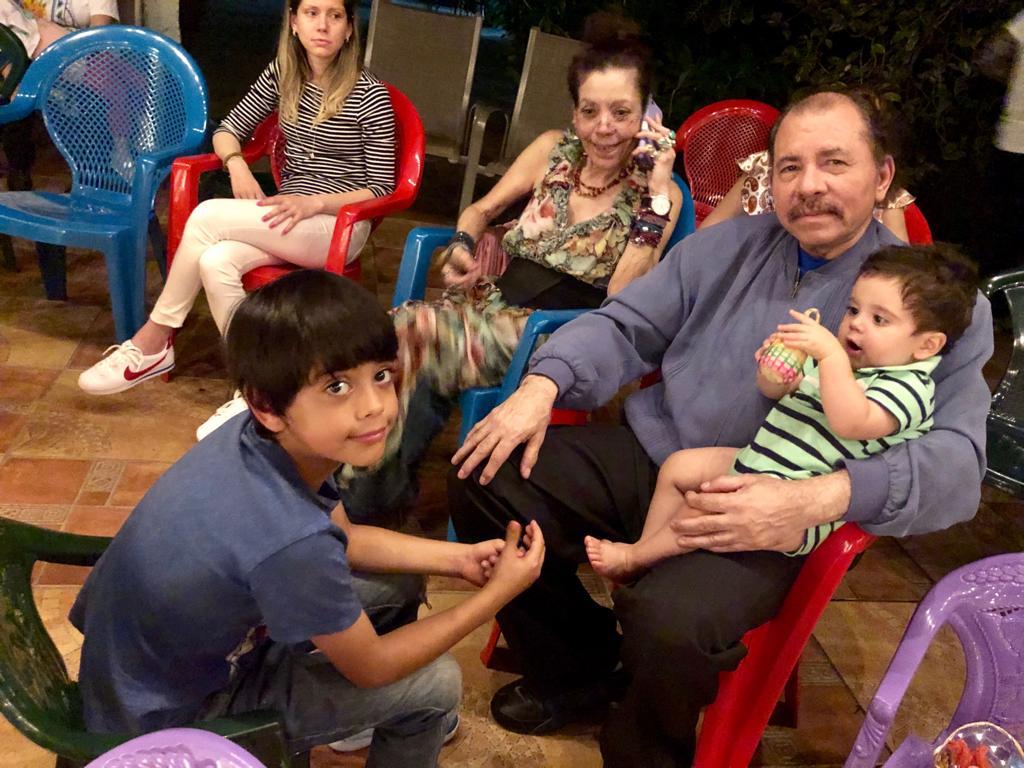
There is nothing novel about using images of children to humanize a dictator. Nazi propagandists used children to show that Hitler had a “softer side.” They even photographed Der Fuhrer feeding a deer.
While the Nicaraguan dictatorial couple has yet to be photographed feeding wildlife, the OPM has been producing an impressive photographic record showcasing the regime’s “normalcy”. For example, a collection on El19 Digital, published on December 23, includes 97 images of people “enjoying the weekend in peace and tranquility, at the recreational spaces built by the Sandinista government for Nicaraguans.” The images include folks sailing on the new artificial lake, unveiled on December 21. Rosario Murillo said that the lake, which is part of an urban renewal project, was “dedicated with love to all Nicaraguan families, to the families of Managua, [as] a monument for peace and life.”
People sailing on Managua’s new artificial lake.
I argued in The OrMu Propaganda Machine, Part 2 that the efforts of the OPM are not aimed at changing people’s opinions about the regime. Instead, their goal is to empower and encourage Ortega’s sympathizers, and strengthening their sense of community. Creating an alternate reality full of happy people, smiling children, and content dictators enjoying leisure time certainly contributes to the illusion that the regime is good, or as Rosario Murillo often repeats, that Nicaragua has a “good government”
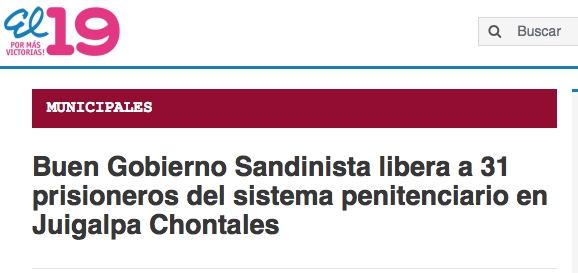
Good Sandinista Government Liberates 31 Prisoners from the Penitentiary System in Juigalpa, Chontales (El 19 Digital, 12/21/2018)
Unfortunately, labelling a government as good does not erase the wrongs. It’s like putting lipstick on a pig.
It’s still a pig.
Sources
Campbell, K. & Huxman, S. (2009). The rhetorical act : Thinking, speaking and writing critically. Belmont, Calif: Wadsworth Pub. Co.
Hoffmann, G. (2000). Visual Literacy Needed in the 21St Century. ETC: A Review of General Semantics, 57(2), 219.
